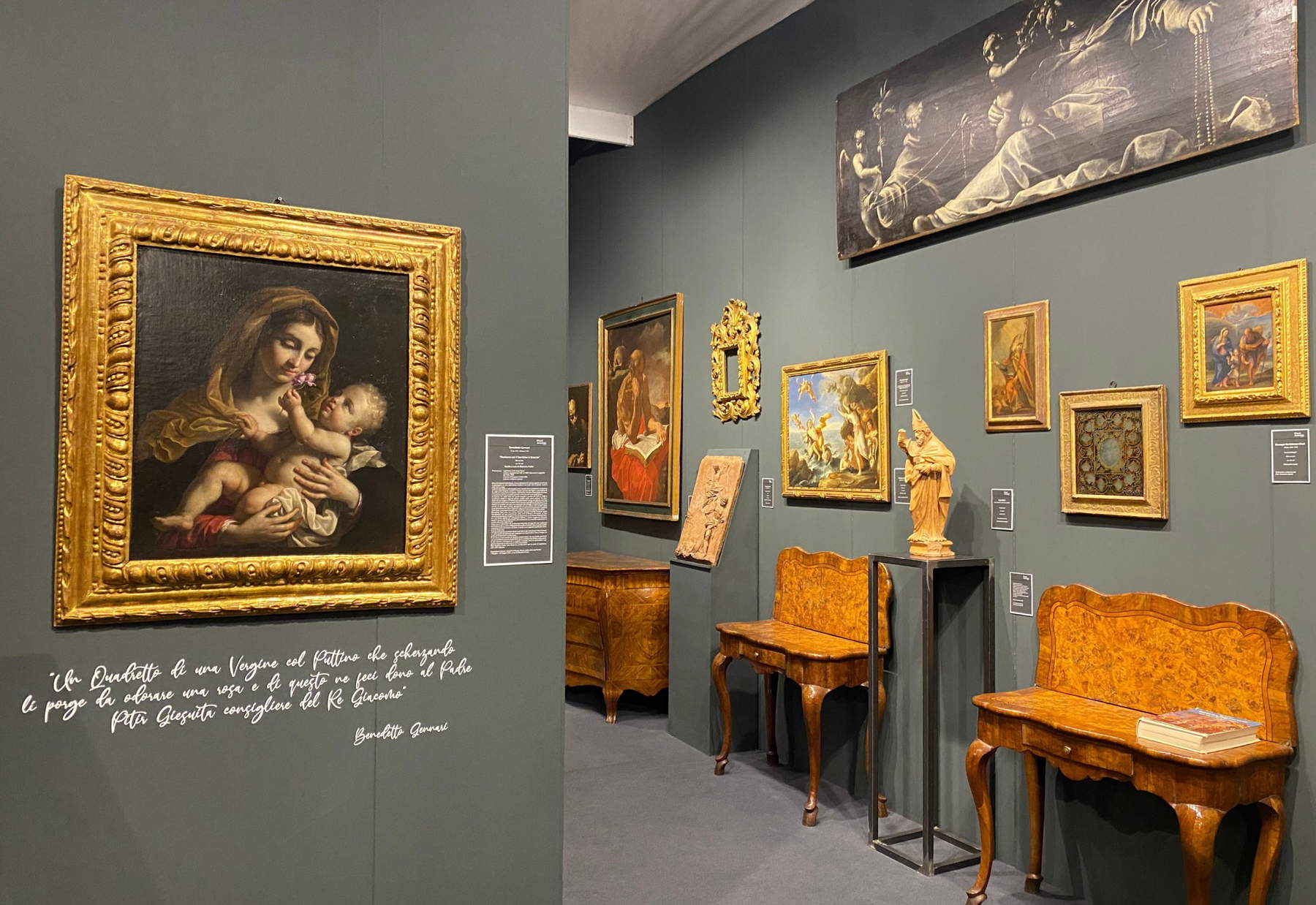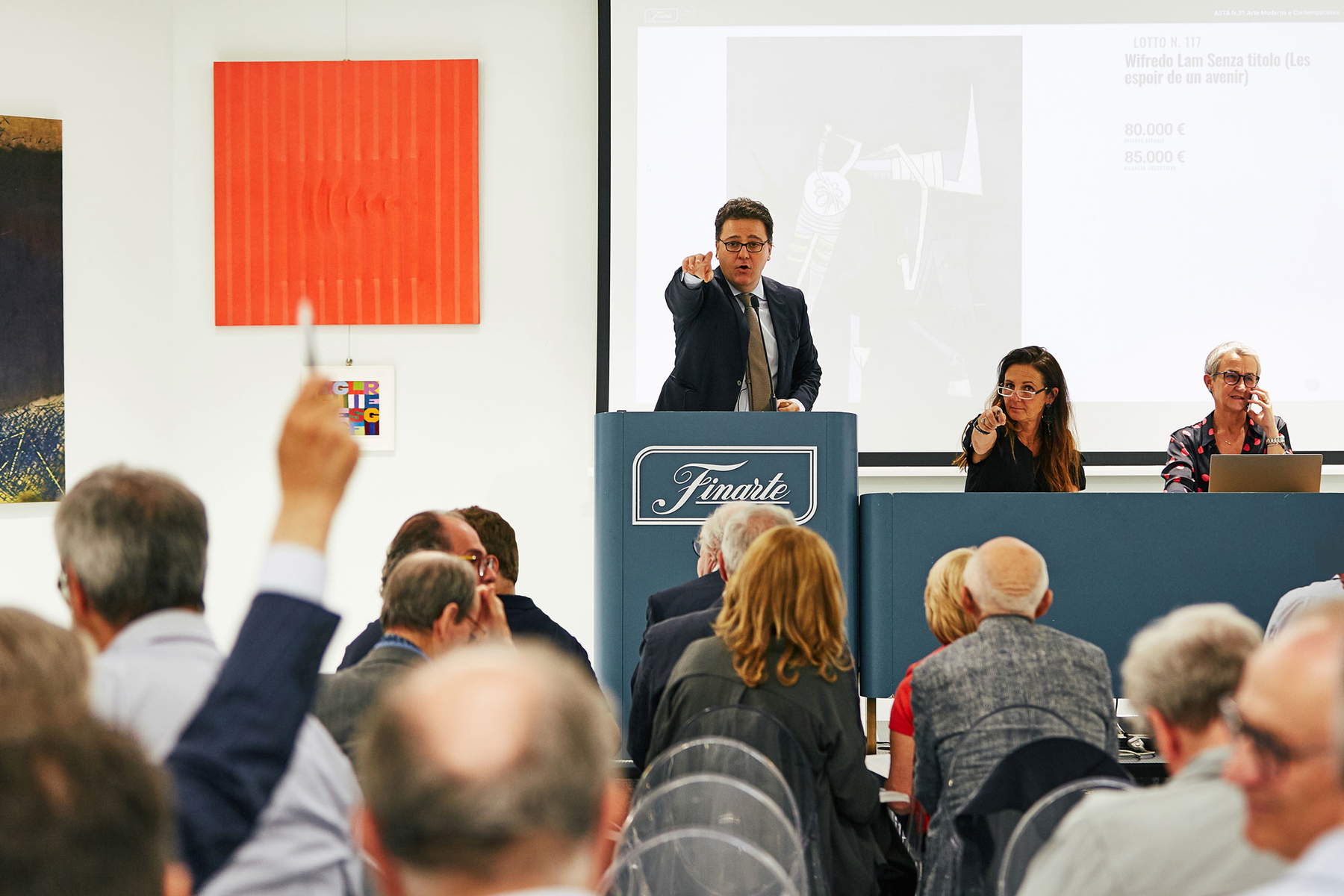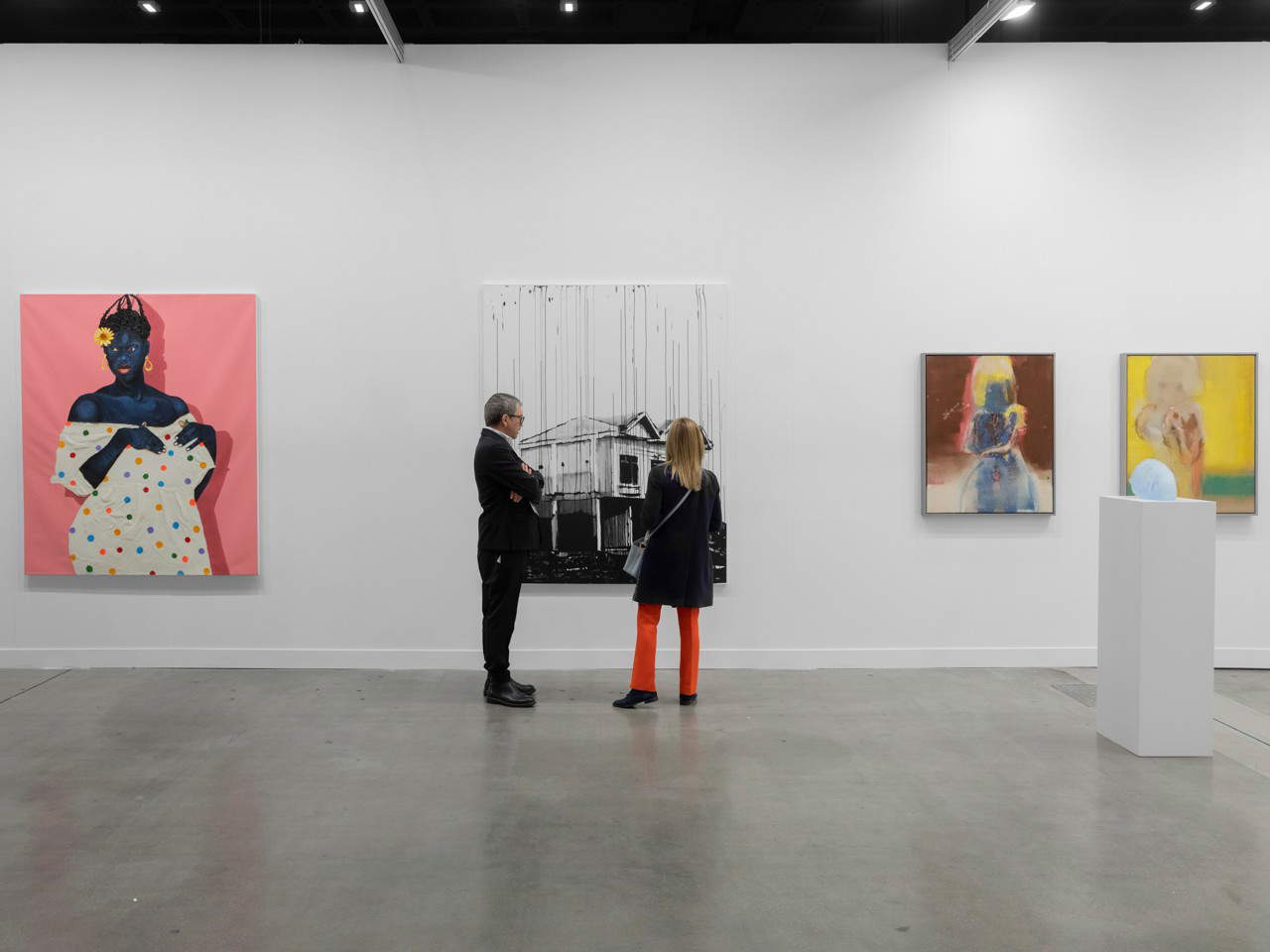Why there is so much discussion about VAT on artwork, and how it works (explained well)
Ten days ago, on June 11, Gruppo Apollo, an association of antiquarians, modern and contemporary art galleries, collectors, art logistics companies and auction houses from all over Italy, issued a statement calling on the Italian government to lower thevalue-added tax (VAT) for the sale of artworks, following what France and Germany, which represent the top two art markets in the European Union, have done, immediately followed by Italy. France, in particular, has established for art sales a reduced VAT rate of 5.5 percent on all transactions as of January 2025, while Germany, in early June 2024, joined its neighbors by including a 7 percent tax in its 2024 tax law (again applicable as of January 2025): the reduced rate replaces the full rate, which in France is 20 percent and in Germany is 19 percent.
Apollo Group’s thesis is that the rates currently in force in Italy, if not changed, will create a disadvantageous situation for our country compared to France and Germany where the tax regime for those who want to buy works of art is much cheaper: as a result, says the group representing the interests of theItalian art industry, foreign taxes, which are more advantageous than those in Italy, can only curb the transfer of artworks to Italy, since “any collector who wanted to import or buy a work in the European Union,” is the Apollo Group’s thesis, “would certainly not do so in Italy.”


How VAT on works of art currently works
Two rates currently apply in Italy: the ordinary rate of 22 percent and the preferential rate of 10 percent. The subsidized rate is applied to all primary market transactions (works that the artist transfers directly to the collector) and imports (i.e., works purchased outside the European Union and brought within the territory of the Union), as established by Article 39 of D.L. 41 of 1995, converted into Law No. 22 of March 22, 1995, which stipulates that 10 percent VAT is applied to “imports of art, antiques or collectibles,” as well as to “supplies of art objects made by authors or their heirs or legatees.” In other cases (e.g., transactions involving art galleries, which act as intermediaries between the artist and the collector, or those that go through auction houses: we therefore speak of a secondary market), the rate is 22 percent. The Law also stipulates what is meant by “objects of art, antiques or collectibles.” Art objects are: paintings, collages, drawings (with the exception of plans by architects, engineers, and in general industrial, commercial, topographical and similar plans and drawings, and also excluding painted canvases for theatrical scenery and various backdrops), engravings, prints, lithographs, sculptures, castings limited to eight copies, tapestries, unique ceramic specimens entirely executed by the artist and signed by him, enamels on copper, photographs drawn by the artist or under his control, signed and numbered. The following are collector’s items: postage stamps, revenue stamps, postmarks, first day-of-issue covers, postal stationery, collections and specimens for collections of zoology, botany, mineralogy, anatomy, or that have historical, archaeological, paleontological, ethnographic or numismatic interest. Finally, antiques are those goods other than art objects and collectibles that are, however, more than 100 years old.
The Italian rate is one of the highest in Europe, as Deloitte’s The Art and Collectibles Market 2024 report notes: “In the international context,” the report says, “the VAT rate in Italy on art imports is among the highest in Europe compared to other states, such as France, which applies a rate of 5.5 percent, the Netherlands and Belgium, which apply a rate of 6 percent, and Germany, which applies a rate of 7 percent. Because of these significant differences, the Italian art market has ended up being less attractive and suffering a competitive disadvantage that the recent Proxy Law for Tax Reform would like to correct.” Therefore, as Deloitte notes, a law is currently being discussed that would also reform this sector within the framework of European legislation.


The European VAT Directive
The framework is that established by EU Directive 2022/542 of April 5, 2022, which amended the value-added tax legislation, seeking to bring as much balance as possible to the European context. The directive must be transposed by member states by Dec. 31, 2024, as it will take effect on Jan. 1, 2025. According to the directive, the “supply of works of art, antiques or collectibles” is included in the “supplies and services that may be subject to the reduced rates.” Works of art are among the categories subject to reduction included in Annex III of Directive 2006/112: however, each Member State is allowed to apply reduced rates to a maximum of 24 categories out of the 29 in the Annex.
It is not certain, therefore, that Italy will end up applying the reduced regime to works of art. These are the 29 categories: foodstuffs for human and animal consumption, live animals, seeds, plants, ingredients for food preparations; water supply; medicines (including veterinary medicines, contraceptives, feminine hygiene protection products and sanitary napkins); appliances, instruments, medical devices (e.g., masks); transportation of passengers and accompanying goods; books, newspapers, periodicals; tickets for shows, theaters, circuses, fairs, amusement parks, concerts, museums, zoos, cinemas, exhibitions, various cultural events; reception of radio and television broadcasting and webcasting services, internet access services; services provided by or royalties payable to writers, composers and performing artists; sale and construction of housing that falls under social policies, construction and renovation of public buildings or buildings used for activities of public interest, window cleaning and cleaning, installation of solar panels; goods and services for agricultural production except capital goods, live equines; lodging at hotels and similar establishments, restaurant and catering services; tickets to sporting events or access to direct streaming of such events; goods and services from organizations engaged in social welfare and social security activities; funeral services; medical and dental care and spa treatment; sewage disposal and public street cleaning; repair of household appliances, footwear and leather goods or clothing and household linen; home care services; hairdressing; supply of electricity, district heating, district cooling, biogas; live plants, bulbs, cut flowers, ornamental foliage; children’s clothing and footwear, car seats; bicycles; art, collectibles and antiques; legal assistance in labor court proceedings; first aid tools; services for the operation of lighthouses or lightships. The categories that will be excluded from the 24 granted will have to operate under the VAT of the ordinary regime.
France and Germany have already chosen to include works of art in the categories subject to the preferential rate. French Economy Minister Bruno Le Maire explained to Les Echos newspaper that the decision to raise VAT to 5.5 percent for works of art was made in consultation with then Culture Minister Rima Abdul-Malak (who remained in office until January 2024: France’s decision is December 2023) to “allow France to remain at the center of the world art market.” Minister Abdul-Malak said the same: “This decision, if adopted by Parliament, will allow Paris to remain the most attractive European capital for the art market. It will promote the enthusiasm of the French art scene and the dynamism of our cultural model, which relies as much on the strength of public institutions as on that of private actors.”
Similar words came last June 5, 2024 from German Culture Minister Claudia Roth in the aftermath of the decision to apply the reduced tax rate in Germany as well: “Especially in difficult times, the reduced tax rate is an important signal for the art trade and the cultural performance of galleries. In this way, the federal government promotes the diversity of the gallery scene and strengthens Germany as a home for the art trade. Special thanks also go to Federal Finance Minister Lindner, with whom we were able to agree on the reintroduction of a reduced sales tax for the art trade.”


What the industry operators are asking for
Art sector operators are asking the government to follow the example of France and Italy: according to Apollo Group, the Italian tax rate could be set at 5 percent, a percentage that would allow the Italian market to become even more competitive, according to the operators. “It is vital for the country’s system,” suggests the Apollo Group, “to continue to remain in the EU market, otherwise it is destined to exit it de facto because it is uncompetitive, setting up the risk of gallerists and artists fleeing abroad.” It will be up to the government to decide because this is what the Delegated Law for the reform of the Italian tax system (111/2023) wants, which in Article 7, paragraph 1, letter e, entrusts the executive with the mandate to reduce the VAT rate on the sale of works of art. Until not long ago, the government’s orientation seemed to be for a sharp reduction: in March 2023, then Undersecretary for Culture Vittorio Sgarbi announced that the government would reduce VAT to 5.5 percent.
It will be necessary to see what the prevailing direction will be: at the moment, artwork transactions are taxed at 22% because artwork has always been equated with luxury goods since it is a good mostly purchased by individuals with high purchasing power, and as a result, artwork transactions have VAT at the ordinary regime (and this is also the orientation of certain political parties: in France, for example, there has often even been talk of plans to increase VAT on luxury products for reasons of tax fairness: cavale, yachts, jewelry, cosmetics, perfumes, private jets, luxury cars, and even works of art).
The work of art, however, is at the same time also a cultural good, say proponents of reduced VAT, and being a cultural good, a state that encourages the exchange of works (and thus, indirectly, their production), is a state that encourages the production of culture, thought, and creativity. The reasons for lowering VAT, however, are mainly economic: in fact, it is believed that the reduced tax can make Italy a more competitive market by encouraging purchases, by buyers, gallery owners, institutions. Lowering VAT would make the purchase of art more affordable for collectors and buyers, stimulating greater demand, leading to increased sales and, consequently, a more dynamic and prosperous art market. And a vibrant market could translate into more opportunities for artists to sell their work, especially with emerging artists in mind who could benefit from lower rates. Then there are those who believe that a lower VAT brings indirect tax benefits: if the reduction results in an immediate direct decrease, the increase in transactions could lead to an increase in indirect tax revenues through increased related economic activity. In addition, a lower VAT could help make art a little more affordable, not only for collectors but also for institutions. In any case, whether it wants to lower the rate or leave everything unchanged, our country has until December to decide what to do.
Warning: the translation into English of the original Italian article was created using automatic tools. We undertake to review all articles, but we do not guarantee the total absence of inaccuracies in the translation due to the program. You can find the original by clicking on the ITA button. If you find any mistake,please contact us.




























